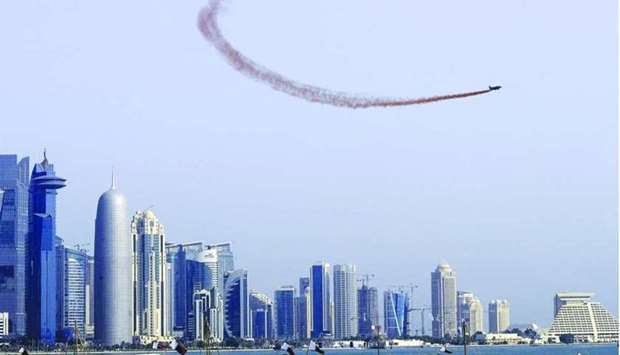Qatar's nominal GDP has been forecast by Emirates NBD at $230.9bn this year and $244.1bn in 2023 while real GDP growth at 5.1% this year and 2.7% in 2023.
The country’s budget balance as a percentage of GDP has been forecast by the regional banking group at 10.4 this year and 12 in 2023.
Inflation based on CPI has been forecast at 4.5% this year and 2.5% in 2023.
Qatar’s GDP grew 4.3% year-on-year (y-o-y) in H1 (first half) of 2022 underpinned by a sharp rebound in building and construction as the country prepares for to host the FIFA World Cup in November and December this year.
Building and construction is the largest non-oil sector accounting for 13% of real GDP. The wholesale and retail trade sector posted double digit growth in Q2 (second quarter), while manufacturing output grew 6.2% y-o-y.
However, financial and insurance services contracted -5.1% y-o-y in Q2 and -3.7% y-o-y in H1. Smaller sectors such as transport and storage, real estate activities and business services posted strong annual growth, contributing to the 9.7% y-o-y growth in non-oil GDP.
Oil and gas GDP was much more modest at 1.2% y-o-y in Q2 but Emirates NBD expects this to accelerate in the second half of the year.
The World Cup will likely keep business activity strong in Q4 but the pipeline of new work may continue to soften as borrowing costs rise and fewer new projects are launched.
Money supply growth has accelerated to 12.4% y-o-y in August, the fastest growth since 2018, largely on the back of increased FX deposits. Private sector credit growth has slowed to 6.6% y-o-y in August from a peak of 9.7% y-o-y in February this year. Government and public sector credit growth has declined on an annual basis after double digit growth in 2021, falling to -13.6% y-o-y in August.
Qatar’s budget has benefitted from the surge in oil and natural gas prices this year, with oil and gas revenues up 67% y-o-y in H1. Other revenues have also increased sharply this year, with top line revenue up 58% y-o-y in H1.
Expenditure growth has been more restrained at 13% y-o-y, focused on capital spending projects. Current spending and wages and salaries have increased 11-12% y-o-y in H1.
“We expect the budget surplus to widen to over 10% of GDP this year, rising slightly to 12% of GDP in 2023 on the assumption that oil and gas prices will remain high,” Emirates NBD noted.
The country’s budget balance as a percentage of GDP has been forecast by the regional banking group at 10.4 this year and 12 in 2023.
Inflation based on CPI has been forecast at 4.5% this year and 2.5% in 2023.
Qatar’s GDP grew 4.3% year-on-year (y-o-y) in H1 (first half) of 2022 underpinned by a sharp rebound in building and construction as the country prepares for to host the FIFA World Cup in November and December this year.
Building and construction is the largest non-oil sector accounting for 13% of real GDP. The wholesale and retail trade sector posted double digit growth in Q2 (second quarter), while manufacturing output grew 6.2% y-o-y.
However, financial and insurance services contracted -5.1% y-o-y in Q2 and -3.7% y-o-y in H1. Smaller sectors such as transport and storage, real estate activities and business services posted strong annual growth, contributing to the 9.7% y-o-y growth in non-oil GDP.
Oil and gas GDP was much more modest at 1.2% y-o-y in Q2 but Emirates NBD expects this to accelerate in the second half of the year.
The World Cup will likely keep business activity strong in Q4 but the pipeline of new work may continue to soften as borrowing costs rise and fewer new projects are launched.
Money supply growth has accelerated to 12.4% y-o-y in August, the fastest growth since 2018, largely on the back of increased FX deposits. Private sector credit growth has slowed to 6.6% y-o-y in August from a peak of 9.7% y-o-y in February this year. Government and public sector credit growth has declined on an annual basis after double digit growth in 2021, falling to -13.6% y-o-y in August.
Qatar’s budget has benefitted from the surge in oil and natural gas prices this year, with oil and gas revenues up 67% y-o-y in H1. Other revenues have also increased sharply this year, with top line revenue up 58% y-o-y in H1.
Expenditure growth has been more restrained at 13% y-o-y, focused on capital spending projects. Current spending and wages and salaries have increased 11-12% y-o-y in H1.
“We expect the budget surplus to widen to over 10% of GDP this year, rising slightly to 12% of GDP in 2023 on the assumption that oil and gas prices will remain high,” Emirates NBD noted.


